► We step inside Alfa Romeo ahead of Giulia sales
► Ferrari 458 engineers poached for Giulia project
► Alfa’s M3 rival packs a mean punch
Everything sounds better in Italian. ‘Ho bisogno di svuotare la mia fossa biologica’ sounds like poetry, but it actually means ‘I need to empty my septic tank’. Say ‘Dov’è il negozio di scarpe’ and you sound like you’re ordering a pizza in a fancy restaurant, when in fact you’re asking directions to the nearest shoe shop. And ‘Squadra Puzzola’ might sound like a new Formula 1 team, but it’s actually an approximation of ‘Skunk Works’. Which is a pretty ugly name in English, though it’s a cool concept: don’t we all want our cars to be hot-rodded by a ‘skunk works’? A small team of dedicated developers, working in top secret, all black-ops and underground? Ken Block probably has a skunk works building his next drift car right now; Toyota is not using a skunk works for the next Auris.
The name originates from the US aerospace company, Lockheed Martin. During the latter years of World War II, the US Military urgently needed a new fighter plane, to counter the rise of the Nazi jet planes. Realising it would take years to push a new design through the usual channels, it asked Lockheed to ignore the rules and conventions of military procurement, and just get it done. Lockheed put a young engineer called Kelly Johnson in charge of a small, hand-picked team, and gave him 150 days to deliver a new aircraft. Because the factories were all flat-out with the war effort, Johnson’s team was housed in a former circus tent, round the back of a manufacturing plant. The tent smelled bad, and the top secret project became known as the ‘Skunk Works’. Johnson delivered the XP-80 Shooting Star in just 143 days – it was America’s first jet fighter.
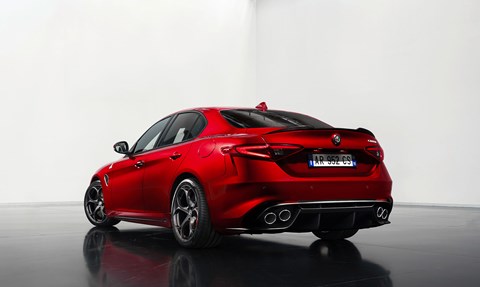
Cool story. Now hold everything you’ve just read in your head, and think about Alfa Romeo. Of course, it’s perfect isn’t it? A once-great sporting brand, locked in a gigantic corporation, stifled by the bureaucracy, the platform sharing, the economies of scale, the god-awful front-wheel drive… Alfa Romeo has been needing to think outside the usual channels for a generation; to ignore the committees and accountants and the Fiat Doblo parts bin, and create its own XP-80 Shooting Star.
Trouble is, this kind of thing never happens within a big corporation – you need to be a TVR or an Ariel to take risks like that. But this time – miraculously! – the CEO of Fiat Chrysler Automobiles (FCA), Sergio Marchionne, did exactly that, and you’re looking at the result. It’s an incredible story. If this car is anywhere near as good to drive as it looks, the new Alfa Giulia will go down in history… and the Squadra Puzzola will become legend.
Lorenzo Ramaciotti strolls into the huge white room, looking relaxed and cheerful. We’re inside Fiat’s sprawling Mirafiori factory in Turin, visiting the Centro Stile design studios for a first, close-up look at the new Alfa Romeo Giulia. And when I say ‘first’, I mean ‘world first’ – after its unveiling in Frankfurt, CAR is the first magazine anywhere in the world to enjoy a private one-to-one with the car. And now Ramaciotti’s popped in for a chat.
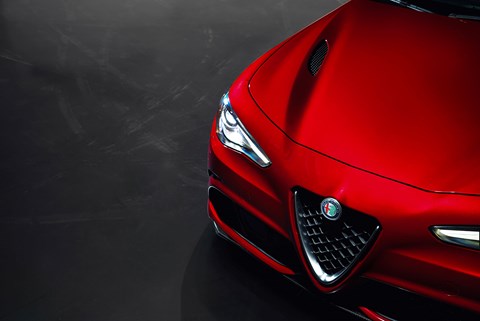
This man is one of the most significant designers of the last 40 years, yet he’s never been a celebrity stylist. He’s like your favourite uncle – gentle, self-effacing, with a warm twinkle in his eye. Incredible to think, as I talk to him, that ‘Uncle Lorenzo’ here joined Pininfarina in 1973, rose to be the head of that most famous of design studios, and was responsible for cars such as the Ferrari 456, the 550 and the Enzo, plus the Peugeot 406 Coupe and the gorgeous Maserati Birdcage concept from 2005. The Birdcage was one of Ramaciotti’s last projects before he stepped down (buying a Ferrari 430 as a retirement gift to himself). He probably thought he was going to take it easy, do some gardening and write his memoirs, but then in 2007 Sergio Marchionne called him and asked him to oversee the designs of FCA’s growing portfolio of brands – Fiat, Ferrari, Maserati, Alfa Romeo, Lancia, Dodge, Chrysler and Jeep. So Ramaciotti came back, and (amongst other things) managed the team that did the Maserati Alfieri concept and the Alfa 4C, before retiring again. But this second retirement is still a working retirement – he hands me his business card which says ‘Special Advisor to the CEO’. Wow, this guy really doesn’t know how to stop.
So does that mean he’s still hands on, I ask? Does he still draw, for example? (I’m itching to hand him my notebook and pen for a signed sketch, which I can then frame and keep forever until I sell it on eBay). ‘No, I don’t draw any longer,’ he says, smiling (I try to hide my emoji sad face). ‘My skills are more in… direction,’ he explains carefully. ‘In decision making. And the tutoring of people with me’.
And talking – Ramaciotti is very good at talking. ‘I am “Chief Designer Emeritus”, like the Pope,’ he adds, chuckling. ‘But I still like to speak about cars and car design’.
Which is an invitation to talk if ever I heard one, so I ask Ramaciotto about the Squadra Puzzola that designed the new Alfa Giulia. ‘We have been working for some time to come out with a new saloon for Alfa Romeo,’ he begins, ‘using different layouts. And it was very hard, because we had to ‘cheat’ to make the proportions right for the car.’
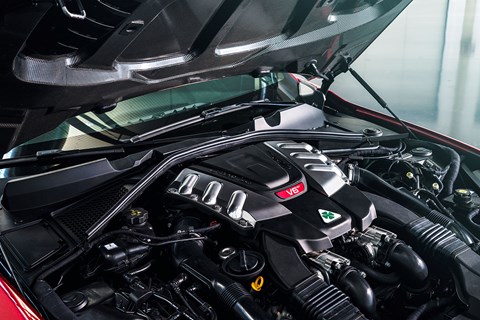
By ‘cheat’, he means making a front-wheel-drive car look like a rear-wheel-drive car. ‘The root of Italian car design is in proportion,’ Ramaciotti goes on. ‘It’s the way a car sits on the road, the ratio of the body to the wheels, the position of the cabin, the size of the overhangs. If the proportions are not right, you start to cheat to make them look right, and that’s not the best way to do it.’
Then he says something only a charming and witty Italian uncle could get away with: ‘When you dress a woman, if the woman is fat and low, it will not work. You can put vertical stripes to make her look slimmer, but still…’
So – there they are, the whole Fiat-Alfa-FCA team, spending years trying to turn a Doblo-parts-bin, front-drive Alfa into a a proper sports saloon, and they’re going round in circles and getting nowhere. Which is when Marchionne steps in with his Lockheed Martin-inspired brainwave. ‘The CEO (Ramaciotti always calls Marchionne ‘the CEO’) wanted to get back to the roots of Alfa, and start with a white sheet of paper. And when I say ‘white sheet of paper’, it’s not just the piece of paper, but the approach you have to putting things on the paper. He wanted people to feel free in proposing and thinking.’
So the Squadra Puzzola was born, in secret, and at its head – my god, I can’t believe I’m writing this, it’s like a script out of a car enthusiast’s action movie – is none other than Philippe Krief, the Ferrari chassis engineer responsible for the Ferrari 458 Speciale. I feel I need to add a few exclamation marks in now, just for effect: !!!!!!!!
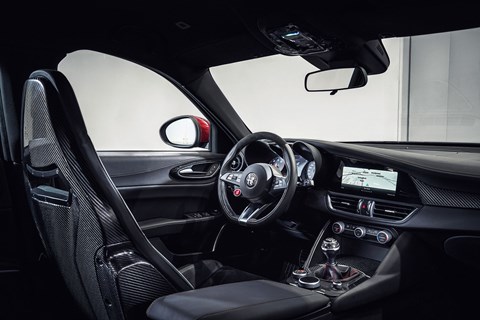
Krief is told to assemble a crack squad of just ten people, to hide in a secret location and create the perfect Alfa sports saloon for the 21st century. Talking to CAR as Giulia was first unveiled back in June, Krief described the process: ‘I called them one by one, like Mission Impossible: you choose your guy, you call – okay, they come! I called one guy in Australia, who had worked with me and quit the company. Three years later he’s working in Australia for another car maker, I call him and say, “What do you think?” And he says “I’m your man”’.
Soon, this special Ferrari-inspired team assembles in Italy to discuss their bank heist – sorry, engineering project; they’re given a blank sheet of paper and told to develop the perfect Alfa,and ex-Pininfarina chief Lorenzo Ramaciotti is in charge of the styling. Cue the theme music to The A Team and get me Hollywood on the phone.
Two and a half years later, we’re in a big empty room in Turin, enjoying the product of the Squadra’s work. And I can tell you, it looks incredible, as soon as you see it: low, wide, muscular and purposeful. This is a brand new platform from the ground up, and that all-important, rear-wheel-drive configuration is hard-baked into the design: the front wheels are pushed forwards, the wheelbase stretched back (it’s the longest wheelbase in its class, apparently), and the whole thing appears to be swept back on its haunches, like a hill-top tree that’s been shaped by the wind. The stance, the proportions – it just looks instinctively ‘right’ as soon as you clap your eyes on it.
‘Having this freedom, of a new platform, and starting with a white sheet of paper, we were so lucky to work with the perfect proportions,’ Ramaciotti says, as we admire the car. ‘We could have a car with a long wheelbase, short overhangs, cabin to the rear – everything was fitting, and the ideas that were not working so well on previous efforts were working beautifully on this one.’
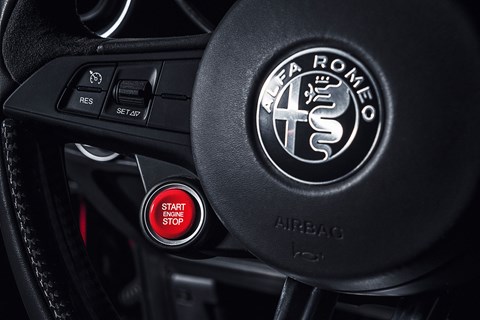
Blessed with this dream scenario, Ramaciotti’s team did not disappoint. The Giulia is a handsome car, lean but pumped up, bulging like a bodybuilder’s biceps. It’s curvaceous too, and apart from the scoop down the flanks, there isn’t any really defining line on the car. ‘It’s a car you must see in the flesh,’ Ramaciotti agrees. ‘It’s very three-dimensional, it doesn’t have a main character line on which the light can play – you have to understand the curvature of the surfaces on the real thing. Italian design is about simplicity and purity,’ he goes on. ‘It’s not a matter of how many lines you draw, the sculpture of the surface should speak by itself. The surfaces must be richly developed in a way that shines under the light’.
It’s wonderful to spend time with Ramaciotti as he talks this way, and he can’t help getting enthusiastic about it, despite spending months already looking at it. He walks up to the rear haunches of the Giulia, andhis hand hovers over the C-pillar as it melts into the back window and rear deck. ‘Here!’ he says, as he strokes the invisible air above the car. ‘We are very proud of this area. When you see the car in the three-quarter, the cabin becomes very small, it changes perspective, gives an unexpected view.’
That rear three-quarter also shows off the rear haunches and the dragster-fat rear tyres. This ‘Quadrifoglio’ example – the unofficial ‘launch spec’ – sits on standard 19-inch rims, and there will be no 22-inch option. The design was conceived around these wheels, the arches were cut for them, and they look perfect. We move round to the front and I tentatively suggest the headlights are the most disappointing aspect of the car. They look generic – there’s a little bit of BMW in there, a bit of Jaguar… I loved the old 159’s triple hooded lights, which looked so distinctive and menacing – why not keep those?
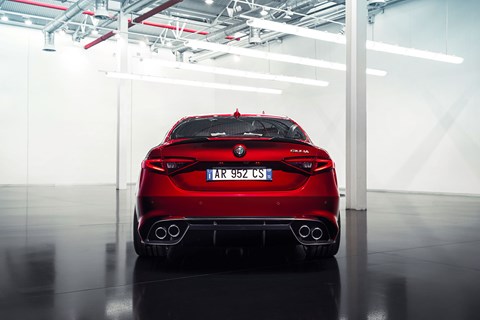
‘The 8C and 4C had round lenses,’ Ramaciotti reminds me. ‘But we didn’t want to reference any specific car in the past – this is not a successor to the 159, we wanted to start from scratch. We wanted to achieve a car that looked low and wide.’
We talk about the vents in the bonnet (all the vents are working) and then take a look at the engine. The underside of the bonnet is bare carbon – another reminder that this is a serious performance car – and beneath it is the new, all-aluminium 2.9-litre twin-turbo V6. Putting out 503bhp, the Giulia Quadrofoglio has a top speed of 191mph and a 0-62 time of just 3.9 seconds. And now I’m feeling I CANNOT WAIT TO DRIVE THIS CAR.
So, a carbon bonnet, carbon roof and a trick carbon propshaft, and doors and wings made of aluminium. I climb inside and find (optional) carbon-backed race seats. I settle into the hip-hugging driver’s seat and adjust the thick-rimmed steering wheel. Inside, the elegant simplicity continues – apart from the Ferrari-inspired starter button on the wheel, it’s all black in here, with subtle brushed aluminium details. ‘Simplicity does not have to mean it is poor,’ Ramaciotti explains. ‘It should be simple but fulfilling.’ Yes master, I understand now – Ramaciotti is fast becoming my Yoda.
And the steering – which our ex-458 Speciale man Krief promises is razor sharp and full of feel – is just two turns lock-to-lock. Everything, everything, EVERYTHING – every little detail is just right, and full of promise.

It all speaks volumes about a car that was designed by a small team, and not a big committee. Take the rear number plate – not a striking detail to you and me, but to the Squadra Puzolla, they sweated it over its location. ‘Since 20 years, Alfa has the licence plate on the rear bumper,’ says Ramaciotti. ‘But the Giulia team wanted the car to be as compact as possible. To have the licence plate in the bumper makes the car longer, because of the packaging for everything in the bumper area. So to keep the car as short as possible, we had to raise the licence plate to the hood. For us, this was a radical decision,’ he says with emphasis.
Really? It’s a glimpse into a world that struggled to reinvent Alfa for all those years – if moving a number plate north by a few inches caused such consternation, no wonder the committees and vested interests couldn’t re-invent the brand. And what a brand – Alfa Romeo won Le Mans four times in the 1930s; it won the Formula 1 World Championship twice in 1950 and ’51; and it won the World Sportscar Championship twice in the 1970s. Marchionne’s plan was to ‘shake the structure of Alfa’, as Ramaciotti puts it, and bring back some of that glory. The result – the engine, the drive, the interior, all those little details – feels like a ‘thoroughbred’. An old-fashioned word, perhaps, but a fitting one for this car and that historic, evocative badge.
It has to be great to drive. Dear god, please. For all sorts of reasons, and with all sorts of meanings, it just has to be great to drive.
The powertrain story
‘The V6 is a ground-up build,’ says project leader Philippe Krief. ‘Twin-turbo, 90-degree. What was important for us was the feeling, it’s not necessarily the amount of torque. When you accelerate, you can have all the torque suddenly then nothing, or you can have torque which is increasing, increasing, increasing: we tuned it to have this feeling.’ The launch car has a manual six-speed ’box, but a bespoke seven-speed dual-clutch unit is coming soon.
The steering story
Krief’s mission was to bring the precision and directness of the Ferrari 458’s helm to the Giulia’s electric power steering. ‘It’s exactly the same kind of stuff we wanted, this kind of feeling,’ he says. ‘We are even lower than Ferrari for the steering ratio, below 12:1. We worked a lot on the feeling.’
The mission story
‘Doing a car in two years is not possible – you ask any car maker,’ says Krief. ‘The standard says four. Marchionne said the only way is to be completely outside of the world, and try to think differently.’ Krief recruited his ten men, who worked collaboratively in an ‘open space’, with Marchionne dropping in once a month. The total Giulia team is 600 strong, which is about 20% of the numbers Fiat would deploy. ‘No negative voices – we just had to do it,’ says Krief.
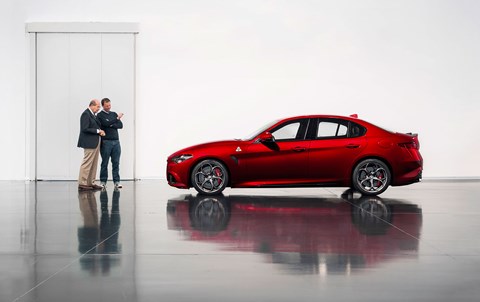
The weight story
The team worked to a target weight of 1500kg for the Cloverleaf, and used carbon and some aluminium to achieve that. But most of the body is steel? ‘Aluminium wasn’t that efficient in terms of weight saving,’ says Krief. ‘Even the new Jaguar XE V6 is heavier. It’s not about aluminium for aluminium’s sake, it’s all about the weight.’
The aerodynamic story
Giulia is designed with ‘natural downforce’ – a product of design, proportions and a wide track. The rear spoiler is fixed but active aero is deployed via the front splitter by what Alfa calls Chassis Domain Control. ‘There are two electric actuators linked to the brain that understand if you’re in a curve or a straight line, in an understeer or oversteer situation, and in respect of that decide to move the splitter,’ says Krief. Electronic dampers and a multi-link axle improve stability.
The spec: Alfa Romeo Giulia Quadrifoglio
Engine: 2.9-litre twin-turbo V6
Transmission: Six-speed manual, rear-wheel drive
Power: 503bhp Torque 443lb ft
Performance: 3.9sec 0-62mph, 191mph
Kerbweight: 1524kg
Price: TBC but expect it to match the BMW M3
On Sale: Autumn 2016
The 5 Alfas that made Giulia a star
Lorenzo Ramaciotti admitted his design team spent a lot of time with the Alfa Museum’s vast car collection. He reveals the five cars that most inspired the Giulia project
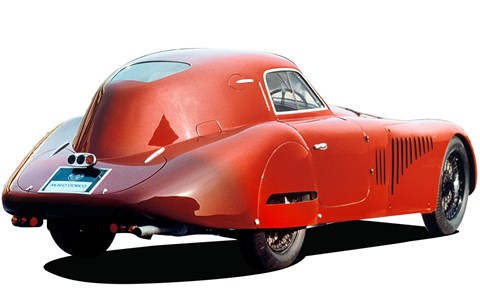
1938 Alfa 8C Le Mans Special
This one-off racer didn’t win the 1938 Le Mans as intended, but with its streamlined body by Touring it’s one of the crown jewels of the Alfa Museum. ‘Clean, simple, beautiful,’ says Ramaciotti.
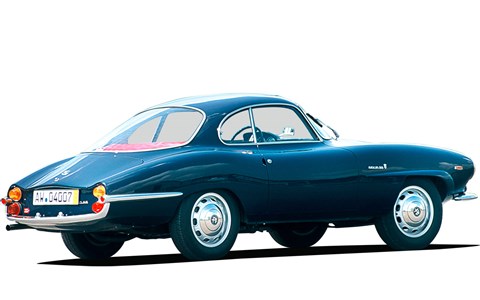
1957 Giulietta SS
Inspired by Bertone’s wild BAT concepts, the Sprint Speciale was launched in 1957. ‘The cabin treatment is very round,’ says Ramaciotti approvingly. ‘The shape is very subtle.’
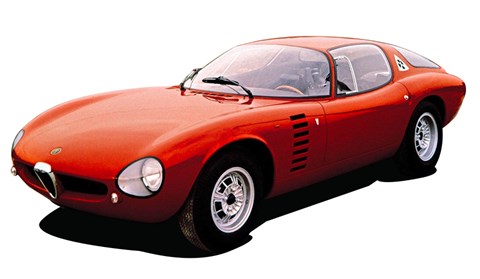
1964 Alfa Canguro concept
This one-off prototype – now in a private collection in Japan – was designed by a young Giorgetto Giugiaro while he was at Bertone. ‘He is a master at surfacing,’ says Ramaciotti.
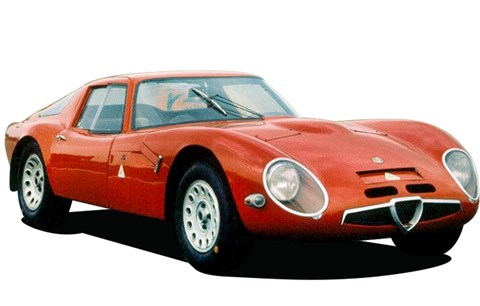
1965 TZ2 Zagato
Built by Zagato in 1965, the low-drag TZ2 is a candidate for the most beautiful car ever. Tellingly, Ramaciotti actually owns an example of the TZ2’s smaller cousin – a 1956 Abarth Zagato 750 ‘double bubble’.
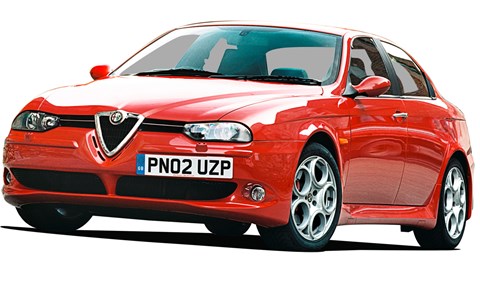
1997 Alfa 156 saloon
The 156 still looks good almost 20 years after launch. ‘It opened a new concept in the family sedan, because it was very sporty,’ says Ramaciotti. ‘It was simple, with a rounded, softer, muscular shape.’
Alfa’s 7 steps to recovery
Marchionne pledges 7 cars by 2019. That’s one busy schedule…
Giulia saloon (2016): Yes, cooking models running 2.0 petrol turbos and 2.2 diesels will flesh out the range, when production starts next spring/summer
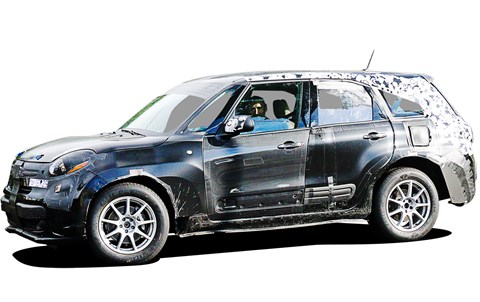
Midsize SUV (2016): Audi Q5 rival, codenamed 949, vital to ride the SUV wave: all-wheel drive and on sale late next year
Compact SUV (2017): No codename yet: does that indicate Giulia platform can’t shrink to fit planned X1 rival?
Alfetta saloon (2017): Project 961 is Alfa’s 5-series rival, with rear- and all-wheel drive, four-pot and V6 engines
Giulia coupe (2018): While a Giulia estate is a no-go, a two-door 4-series fighter is planned for early 2018
Duetto Spider (2018): An Alfa Spider based on the MX-5 has now become a Fiat roadster; Alfa will engineer its own drop-top using Giulia bits
Giulietta Mk2 (2019): Planned as a rwd hatch, it could switch to front-drive. A replacement Mito, based on the next 500X, may follow.